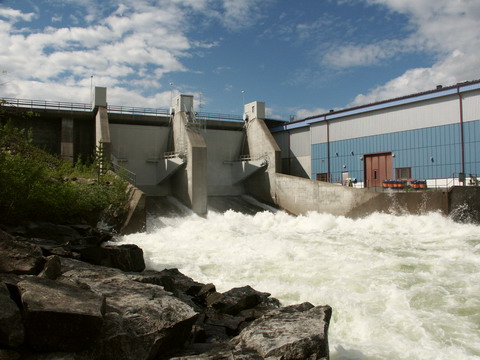Parki
Facts
Country
Sweden
Electricity Capacity
19 MWe
Stream
Lule älv
Head
14 m
Water discharge
170 m³/s
Turbine type
Kaplan
Vattenfall ownership share
100 %
Status
In Operation
Water information
Above pond
Below pond
Total
Through turbine
Through pond hatch
Last update

Parki power plant, about 40 kilometres from Jokkmokk, was built between 1967 and 1970. Parki is Vattenfall's smallest hydro power plant in the river Lilla Lule älv, a tributary to the river Lule älv.
The electricity generated at Parki was mostly seen as a bonus effect. The main contribution of Parki power plant was to provide flow regulation for the rest of the river, which was of great importance to power stations further downstream as it enabled them to generate more electricity.
Another special feature of Parki is that at the time of its construction, there was only one other hydro power plant with a bulb turbine in Sweden. Due to the low head (drop) of 14 meters, the installation of this type of turbine was the optimal solution for Parki.
The river Lule älv
Around 40 % of the energy consumed in Sweden is generated by hydro power. The river Lule älv, on which Parki is located, is the most important river in Sweden for hydro power generation.

